Looking to buy a bowrider? Here’s what to know.
Whether you’re after a compact runabout for sheltered rivers or a sporty model for wakeboarding, cruising, or even casual fishing, bowriders are built for fun and versatility. From budget-friendly starters to high-end cruisers, each type comes with its own strengths, limitations, and best-use scenarios. Choosing the right one depends on how, where, and why you plan to use it. Below is a breakdown of the main types of bowriders, covering their pros, cons, performance, comfort, pricing and more.
Types of Bowriders: Choosing Your Boat.
Bowriders fall into 3 main categories: small runabouts, mid-size sport boats, and larger luxury cruisers. Each suits a different purpose, so knowing the differences helps you choose the right one.
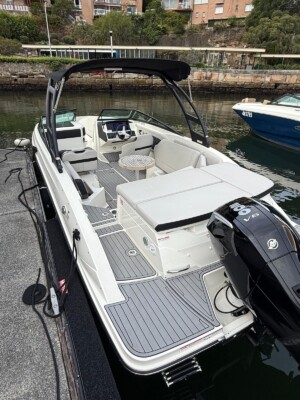

Small Runabout Bowriders
Open bow layout for relaxed, social seating
Best for: Family cruising, water sports, casual fishing, and exploring lakes, rivers, or sheltered coastal bays
General size: 5m – 8m
Construction: Lightweight fibreglass or aluminium hulls
Features: Open bow seating area, rear swim platform, ski tow points, under-seat storage, comfortable space for 6–10 people, with options like biminis, wake towers, and sound systems
Price range: $30,000 – $150,000+
Popular brands: Sea Ray, Bayliner, Chaparral, Four Winns, Quintrex, Stacer

Mid-Sized Sport Bowriders
More power, space, & upgraded features
Best for: Water sports, day cruising, casual fishing, and entertaining on lakes, rivers, or semi-protected coastal waters
General size: 5.5m – 8.5m+
Construction: Fibreglass or aluminium hull
Features: Spacious open bow, deeper V-hull, rear swim platform, ski tow points, ample storage, upgraded lounges, bimini/wake tower, and optional sound systems or onboard toilets
Price range: $40,000 – $180,000+
Popular brands: Sea Ray, Bayliner, Chaparral, Four Winns, Jeanneau, Haines Signature

Large Luxury Cruisers
Premium comfort, performance, & tech
Best for: Coastal cruising, entertaining, day trips with large groups, light offshore runs, and high-end water sports
General size: 8.5m – 12m+
Construction: Deep-V fibreglass hulls
Features: Expansive bow and rear lounge seating, wet bars, electric toilets, advanced navigation systems, joystick controls, premium upholstery, sound systems, sun pads, and optional cabins.
Price range: $180,000 – $500,000+
Popular brands: Sea Ray, Formula, Regal, Cobalt, Jeanneau, Chris-Craft
More than just day boats, bowriders blur the line between sport, leisure, and lifestyle — all in one sleek, open-deck design.
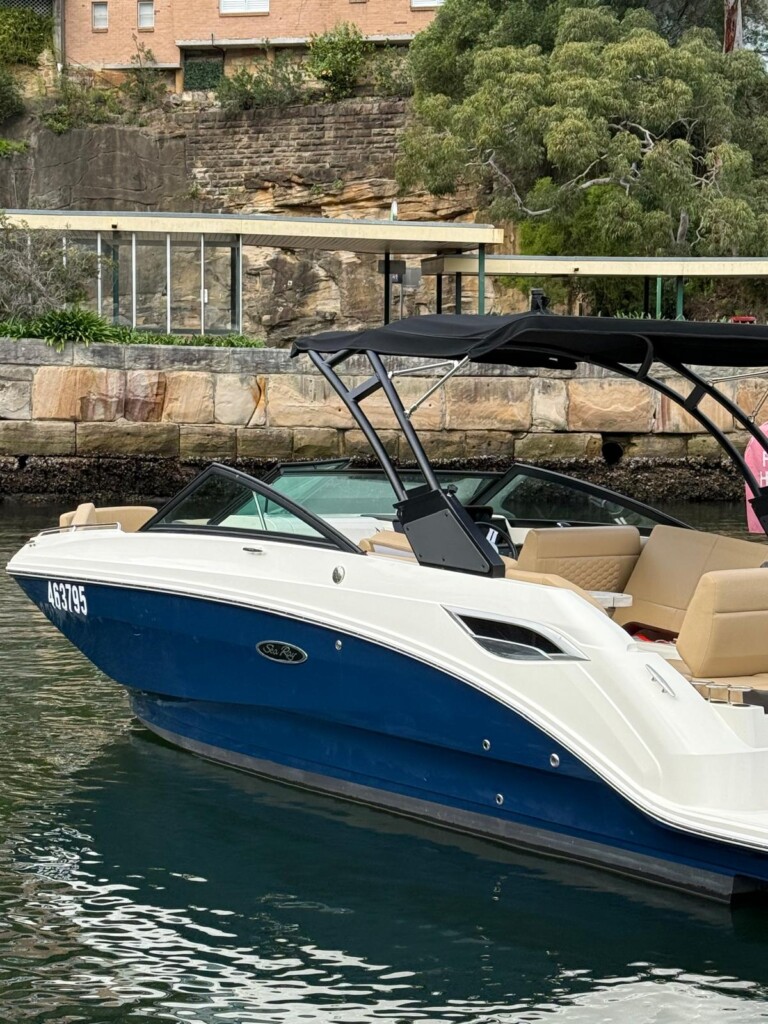
Before You Buy: Key Considerations
Bowriders are built for fun, but choosing the wrong one can turn that dream into frustration. Taking a moment to match the boat to your lifestyle will help you buy smart—and enjoy every trip.
- Primary Use: Whether you’re cruising, fishing, towing wakeboards, or doing a bit of everything, pick a layout that supports your main activities without compromise.
- Material Type: Fibreglass offers sleek styling and a smoother ride in chop. Aluminium is lighter, more rugged, and easier to handle on and off the trailer.
- Features & Layout: Think about your day on the water—seating, storage, shade, ski poles, and swim platforms all add up to comfort and convenience.
- Size & Capacity: Make sure it suits your usual group size, gear load, and the vehicle or space you’ll use to tow and store it.
- Budget: Beyond the sticker price, include costs for the trailer, engine, rego, safety gear, insurance, and ongoing maintenance.
Accessories You’ll Likely Need
Owning a bowrider goes beyond just the boat — having the right gear on board keeps things safe, legal, and more enjoyable.
Essentials:
- Approved PFDs/lifejackets (required by law)
- Mooring and docking ropes
- Anchor and chain
- Safety kit (flares, fire extinguisher, whistle/horn)
- Boat cover (for storage and protection)
- Fenders (to prevent dock damage)
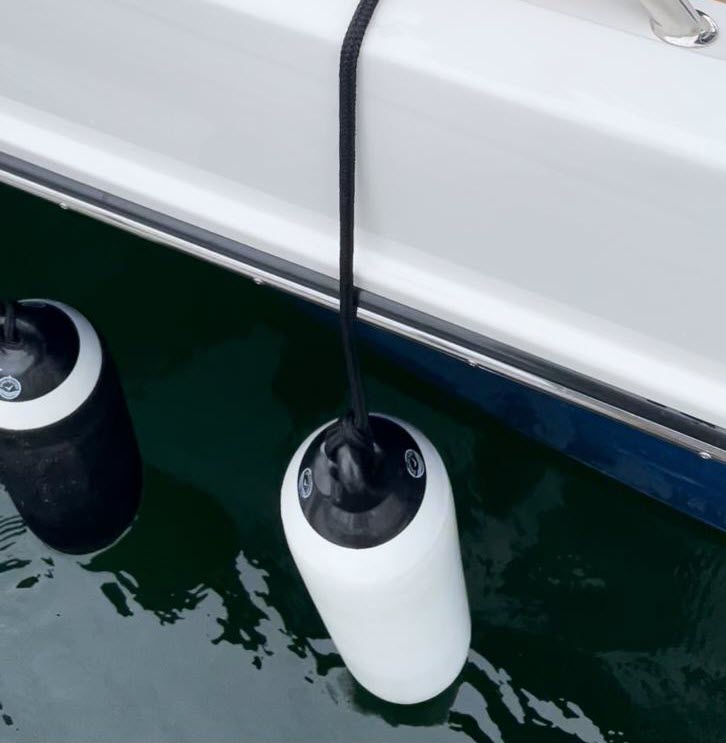
Maintenance & Care Tips
Bowriders are built for fun, but they still need regular care to stay in top shape. Whether fibreglass or aluminium, routine cleaning, checks, and upkeep go a long way toward preventing costly issues. Don’t just dock and walk away—rinse off salt, inspect fittings, service the engine, and cover your boat to keep it looking great and running strong, season after season.
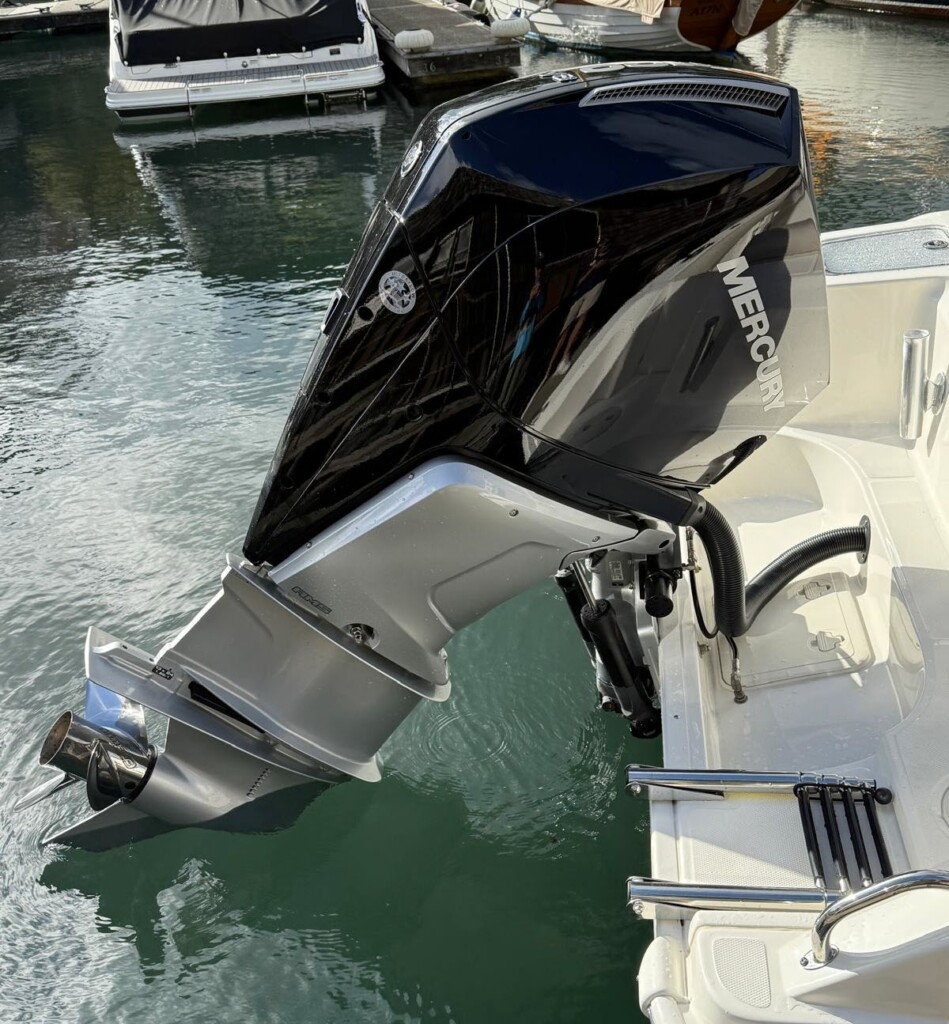
Flush the Engine
If you’ve been out in saltwater, always flush your outboard or sterndrive with fresh water as soon as possible. Salt build up can corrode internal components fast, even after just one trip. Use a flushing kit or earmuffs, and let the engine run for several minutes to clear out salt and debris.
Rinse, Clean, and Protect the Hull
After each outing, give your bowrider a thorough rinse with fresh water to remove salt and grime. Use a marine-safe wash to keep surfaces clean and algae-free. Dry it down to prevent spotting, and apply wax every few months to protect fibreglass from UV and keep that showroom shine.
Stay on Top of Your Battery(s)
Check the battery for corrosion, loose terminals, or signs of fatigue. A trickle charger can keep it topped up between uses, especially during colder months. Keep it charged and clean—flat batteries are a leading cause of ramp delays and ruined trips.
Don’t Neglect Your Safety Gear
Go over your lifejackets, fire extinguisher, flares, horn, and throwable gear regularly. Make sure everything’s legal, functional, and within expiry. Rinse off salt and dry them out after use—rusty or soaked gear won’t help in an emergency.
Keep the Trailer in Check
Before every launch, inspect your trailer. Grease the wheel bearings, confirm tyre pressure, check the winch and straps, and make sure the lights are working. Saltwater eats trailers too—always rinse it thoroughly after retrieval.
Routine Mechanical & Electrical Inspections
Get in the habit of checking fuel lines, oil, coolant levels, and electrical systems like bilge pumps, lights, and nav gear. Catching cracks, leaks, or frayed wires early can save major headaches later. Book a professional service annually to keep things running smooth under the deck.
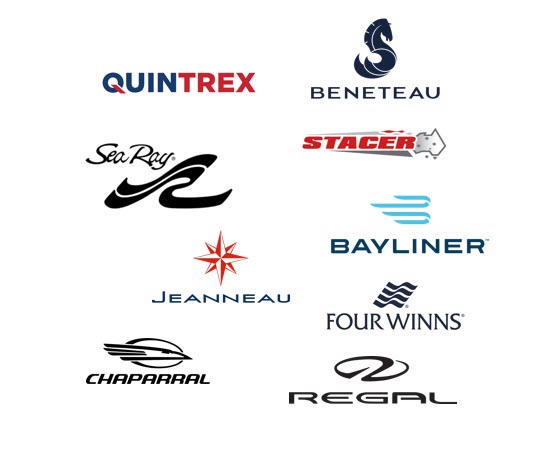
Warranty & Brand Reputation
With bowriders, brand reputation goes beyond looks – it reflects build quality, reliability, and after-sales support. Well-known manufacturers typically offer strong warranties, with hull coverage often lasting up to 10 years and engine protection handled through trusted motor brands. These warranties not only protect your investment but signal confidence in the product.
Lower-cost or lesser-known brands might seem appealing upfront, but they can come with limited coverage, harder-to-source parts, and less responsive support. Before buying, review the warranty in detail; what’s covered, for how long, and under what conditions. Choosing a reputable brand also means better resale value, easier servicing, and fewer headaches throughout your ownership.
Don’t Just Buy a Bowrider—Buy the Right One
Buying a bowrider isn’t just about size, speed, or style – it’s about choosing a boat that fits your lifestyle and grows with how you use it. Whether it’s laid-back cruising, water sports with the kids, or casting a line on a quiet bay, the right bowrider balances performance, comfort, and versatility. Take your time! Prioritise quality construction, smart layout, and features that suit your boating habits now, and where you see them heading. A well matched bowrider will give you years of fun on the water, without the stress back at the ramp.
FAQs
What is a bowrider boat and why are they so popular?
A bowrider is a type of powerboat with an open seating area in the bow (front), designed for relaxed cruising, watersports, and social days on the water. They’re incredibly popular because of their versatility—you can tow the kids on a tube, enjoy a picnic cruise, or cast a line in a quiet bay. The layout makes them ideal for families and anyone who values comfort and flexibility in a single, easy-to-handle boat.
Can I use a bowrider in saltwater, or are they just for freshwater areas?
You can absolutely use a bowrider in saltwater—just make sure you choose the right model and maintain it properly. Many bowriders are rated for coastal use and built with corrosion-resistant materials. Just remember to rinse the hull and flush the engine thoroughly after every saltwater trip. With regular care, a bowrider will perform just as well in a sheltered bay as it does on a freshwater lake or river.
Are bowriders good for fishing, or should I get a dedicated fishing boat?
Bowriders aren’t built for hardcore fishing, but they’re great for casual anglers. The open bow provides plenty of space to cast a line, and you can store tackle and rods in the under-seat compartments. Some models offer fishing packages with rod holders, fish finders, and even live wells. If your main focus is fishing offshore, a centre console might be better—but for mixed-use fun, a bowrider is hard to beat.
What size bowrider is best for a family?
For most families, a bowrider between 5.5 to 7.5 metres (18–24 feet) is ideal. It offers enough room for 6–8 people, space for gear, and enough power for towing wakeboards or tubes. This size range is still manageable to tow and store, while giving you the comfort and features you need for all-day outings.
What’s the difference between a bowrider and a cuddy cabin?
A bowrider has open seating in the front, perfect for socialising and sunbathing. A cuddy cabin, on the other hand, has an enclosed space in the bow—often with a bed, toilet, or storage area—better suited for overnight trips or changing space. If you prefer open-air fun and short trips, go with a bowrider. If you need shelter or plan to stay out overnight, a cuddy cabin may be the better choice.
Are bowriders safe for kids and beginner boaters?
Yes—when used responsibly, bowriders are a safe and user-friendly option for families and beginners. Most models come with non-slip flooring, grab handles, swim ladders, and high sides for safety. Kids should always wear properly fitted lifejackets, and it’s best to keep them out of the bow when the boat is at speed. With some basic boating knowledge and common sense, bowriders are one of the easiest and safest ways to get on the water.
Should I choose an outboard or inboard engine for a bowrider?
Both have their place, but for most recreational users, outboards are the better choice. They’re easier to service, more fuel-efficient, and free up internal space. Inboards (or sterndrives) tend to offer a cleaner look and quieter operation, which some boaters prefer for water sports or luxury cruising. If you’re new to boating or want less maintenance, stick with a modern outboard setup.
How much does it cost to own and maintain a bowrider?
Initial prices range from $30,000 to over $200,000, depending on size, brand, and features. Ongoing costs include registration, insurance, trailer upkeep, servicing, fuel, and storage. On average, expect to spend $1,500 to $3,000 per year for general maintenance and running costs. Taking care of the boat—washing it down, flushing the engine, and staying on top of servicing—can help keep those costs in check.

